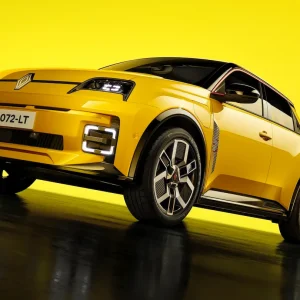Alfa Romeo revealed the secrets of its driving dynamics in four in-depth technical workshops and track sessions at the FCA Group Experimental Centre at the company’s Balocco proving ground in Italy.
Giulia Quadrifoglio and Stelvio Quadrifoglio are at the cutting edge of Alfa Romeo design, and Alfa engineers explained that these were the first to feature these sophisticated systems, which were subsequently extended to the entire range.
One of the technologies discussed was new all-wheel drive with Q4 technology, designed to control the vehicle’s traction reactively and predictively to deliver the highest levels of performance, efficiency and safety. Guglielmo Caviasso, responsible for vehicle integration and validation, told Business Car: “The Alfa Romeo Q4 system provides all the advantages of all-wheel drive, plus good fuel economy, responsive performance and all the driving pleasure of a rear-wheel drive car.”
At the heart of the Q4 system is the active transfer case, which monitors grip conditions and driver inputs in real time to ensure the best performance and, whenever needed, can transfer up to 50% of the engine torque to the front wheels via an extremely compact, lightweight front differential.
The event also revealed Alfa’s new integrated brake system, an electromechanical system that combines stability control with a traditional brake to deliver instantaneous brake response and shorten stopping distances, while also making a significant contribution to weight optimisation. The braking system is also available with carboceramic discs on Quadrifoglio versions.
“We use a top-down style of development system, where the best-performing car in the range, the Quadrifoglio, is the reference even for versions with less powerful engines,” said Caviasso.
“To achieve top performance in braking, we worked on two of the braking system’s main components: the basic system and the actuation system. Our engineers worked during the entire development to integrate the two systems and maximise their performance.”
The main innovation that Alfa Romeo recently introduced to the range is in the Continental MKC1 brake by wire system.
The key advantages offered by the system include a notable reduction in the components inside the engine compartment, replacing one single hardware with a unit made up of pump, power brakes and ESP.
“Apart from being consistent with the philosophy of reducing mass, which has guided the Giorgio project since the beginning, reducing the components allows everything to be more compact inside the engine compartment, guaranteeing less cantilevered mass, making the car more agile,” Caviasso continued.
The workshops also shed light on the sophisticated suspension systems equipped using the patented Alfa Romeo technology known as Alfa Link.
“The Alfa Romeo team has been working on the entire Giulia and Stelvio range for this, starting with the Quadrifoglio versions, which again lets the less powerful engine versions benefit from the more extreme models,” explained Caviasso.
Alfa Link ensures extremely precise control of the characteristic wheel angles, which Alfa says translates into improved handling. The suspension scheme enables the system to be very rigid on corners, while at the same time being very flexible in the longitudinal direction.
The filtering of uneven roads is also improved, due to the use of elastic connections with hydraulic damping.





